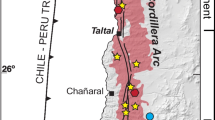Abstract
A detailed fabric and microstructural analysis of the granitic mylonites was carried out on the southern side of Bes,parmak Mountain north of Selimiye (Milas). The mylonitic augen gneisses have a blastomylonitic texture characterized by large retort-shape porphyroclasts or augen of feldspars, around which a more ductile, medium to fine-grained matrix of muscovite, biotite, quartz and feldspar is deflected. Feldspars behave in both plastic and brittle fashion, because size reduction occurs through grain boundary migration and/or subgrain rotation, and also through fracturing. Typical “core-and-mantle” structure, characterized by a large feldspar core surrounded by a mantle of fine recrystallized grains, is very characteristic. The majority of plagioclase twins obey the albite-twin law; however, the association with pericline-law twinning suggests that many of the twins are mechanical. Evidence of strain, such as deformation twins, bent or curved twins, undulatory extinction, deformation bands and kink bands occur characteristically in plagioclase. Myrmekite is ubiquitous at K-feldspar grain boundaries, most notably on the long sides of inequant grains parallel to the S-foliation direction, which invariably face the maximum finite shortening direction. Deformation of quartz in mylonitic augen gneisses commonly results in the development of core-and-mantle structure and “type-4” quartz ribbons of elongated, preferably oriented, newly recrystallized quartz aggregates suggesting a primary dynamic recrystallization. Undulatory extinction, deformation bands and lamellae are the strain-related features associated with quartz porphyroclasts. Micas, especially biotite, undergo internal deformation by bend gliding and kinking. Most of the micas are completely attenuated and aligned such that their (001) planes are subparallel or parallel to the margins of quartz ribbons and define the foliation in the rock. These microstructures of feldspars, quartz and mica in the mylonitic augen gneisses in this part of the southern Menderes Massif are broadly consistent with fabric development under upper-greenschist- to lower-amphibolite-facies conditions, rather than almandine–amphibolite facies, as was previously believed. This supports the previous contention of the authors that the protoliths of augen gneisses are younger granitoids and do not represent an exposed Precambrian Pan-African basement in the Menderes Massif.
Similar content being viewed by others
Author information
Authors and Affiliations
Additional information
Received: 23 November 1995/Accepted: 30 September 1996
Rights and permissions
About this article
Cite this article
Bozkurt, E., Park, R. Microstructures of deformed grains in the augen gneisses of southern Menderes Massif (western Turkey) and their tectonic significance. Geol Rundsch 86, 103–119 (1997). https://doi.org/10.1007/s005310050125
Issue Date:
DOI: https://doi.org/10.1007/s005310050125




